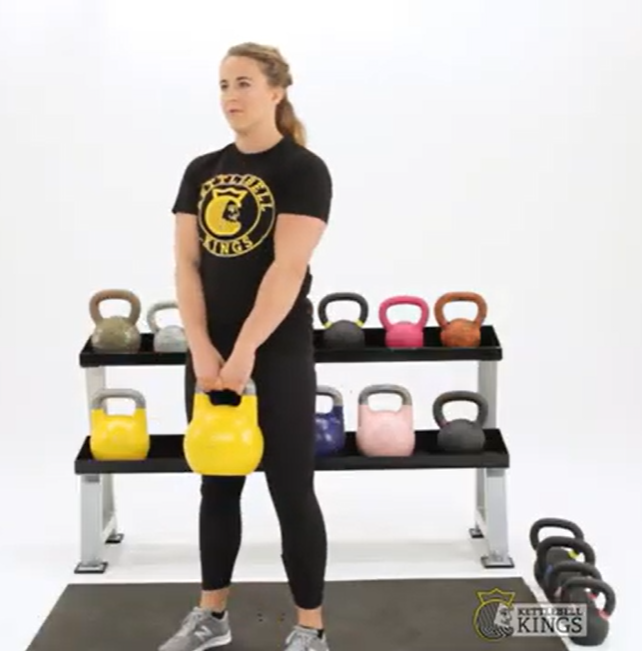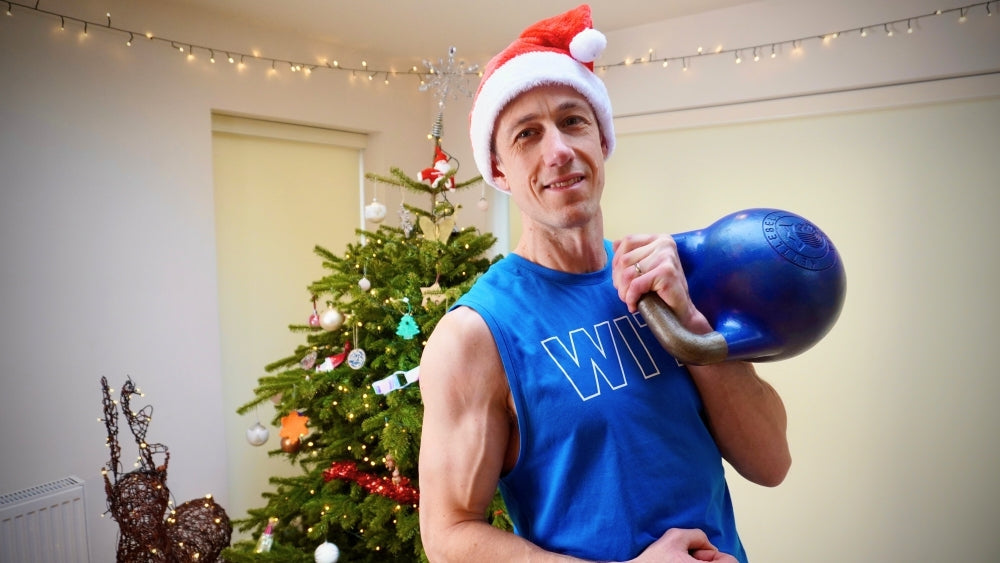In the realm of home fitness, kettlebell exercises stand out as versatile, effective tools for achieving rapid weight loss and overall body sculpting. This comprehensive guide explores the benefits of incorporating kettlebell workouts into your home fitness routine, offering a diverse range of exercises to accelerate your weight loss journey.
The Power of Kettlebell Workouts
Kettlebell exercises provide a dynamic and engaging way to combine strength training and cardiovascular fitness. The unique shape and handle of the kettlebell allow for fluid movements that engage multiple muscle groups simultaneously, maximizing calorie burn and promoting lean muscle development.
Benefits of Kettlebell Workouts
Efficient Calorie Burn: Kettlebell workouts, known for their high intensity, elevate your heart rate, resulting in a significant calorie burn during and after the workout.
Total Body Engagement: The nature of kettlebell exercises requires coordination and engagement from various muscle groups, providing a full-body workout experience.
Versatility: From swings and squats to Turkish get-ups and snatches, the variety of kettlebell exercises ensures a well-rounded fitness routine.
Time-Efficient: With short, intense bursts, kettlebell workouts offer a time-efficient solution for those with busy schedules.
Choosing the Right Kettlebell for Home Workouts
Selecting the appropriate kettlebell is crucial for an effective and safe home workout. Here's a detailed guide on what to consider when choosing a kettlebell and a recommended warm-up routine before diving into your kettlebell exercises.
Weight Selection
- If you're new to kettlebell training, begin with a lighter weight to focus on form and technique. A weight between 8 to 16 kilograms (18 to 35 pounds) is suitable for beginners.
- As you become more comfortable with the movements, gradually increase the weight. Intermediate users often find a range of 16 to 24 kilograms (35 to 53 pounds) appropriate.
- Those with advanced strength can opt for heavier kettlebells, exceeding 24 kilograms (53 pounds).
Material and Coating
Kettlebells are commonly made of cast iron. Consider a high-quality cast iron kettlebell for durability. Some kettlebells also have a vinyl or rubber coating to protect floors and reduce noise.
Handle Design
Choose a kettlebell with a smooth, wide handle. This allows for a comfortable grip and accommodates two-handed exercises.
Safety Precautions before starting Kettlebell Workouts
Safety is paramount when performing kettlebell snatches. Choose the right kettlebell weight for your fitness level and ensure that it has a comfortable handle grip.
Additionally, opt for a safe workout environment with sufficient space to avoid accidents. Proper footwear with good traction will help you maintain stability during the exercise.
Workout Surface, ensure your workout area is clear of obstacles and provides ample space for swinging the kettlebell without obstruction. A level, non-slip surface is ideal to prevent accidents.
Footwear, wear shoes with good arch support and traction. Running shoes or cross-training shoes are suitable options. Avoid shoes with thick, cushioned soles as they can hinder stability.
Kettlebell Exercises to do at Home for effective Weight Loss
Kettlebell Swings
Kettlebell Swings are a dynamic full-body exercise focusing on hip hinge movement. Engaging the posterior chain, they enhance power, cardiovascular endurance, and promote calorie burn
How to do it
- Stand with feet shoulder-width apart, holding the kettlebell with both hands.
- Hinge at the hips and swing the kettlebell back between your legs.
- Thrust your hips forward, swinging the kettlebell to chest height.
- Control the descent and repeat.
Benefits
- Efficiently targets the posterior chain, including the glutes and hamstrings.
- Enhances cardiovascular fitness and burns a significant amount of calories.
- Develops explosive hip power.
Goblet Squats
Goblet Squats are a versatile lower body exercise performed with a kettlebell held at chest level. They target the quadriceps, glutes, and core, fostering strength, stability, and mobility.
How to do it
- Hold the kettlebell close to your chest with both hands.
- Stand with feet shoulder-width apart.
- Lower into a squat, keeping the kettlebell close to your body.
- Push through your heels to return to the starting position.
- Engages the quads, hamstrings, and glutes for effective lower body toning.
- Promotes an upright torso position, benefiting core strength.
- Provides a functional movement pattern.
Turkish Get-Ups
Turkish Get-Ups involve a series of movements from lying to standing with a kettlebell overhead. This intricate exercise enhances stability, mobility, and core strength while promoting full-body coordination.
How to do it
- Lie on your back, holding the kettlebell in one hand.
- Press the kettlebell overhead while keeping your arm straight.
- Follow a series of movements to stand up and return to the starting position.
- Targets the entire body, emphasising core stability and shoulder strength.
- Enhances proprioception and body awareness.
- Promotes functional movement patterns.
Kettlebell Deadlifts
Kettlebell Deadlifts target the posterior chain, including the hamstrings, glutes, and lower back. They strengthen the hip hinge pattern, promoting overall lower body strength and stability.
How to do it
- Stand with feet hip-width apart, kettlebell between your feet.
- Hinge at the hips and bend your knees slightly to grab the kettlebell.
- Stand up, keeping your back flat and chest up.
- Lower the kettlebell with control.
Benefits
- Engages the posterior chain, including the hamstrings, glutes, and lower back.
- Strengthens the hip hinge movement, crucial for everyday activities.
- Provides a lower-impact alternative to traditional barbell deadlifts.
Kettlebell Press
Kettlebell Press focuses on upper body strength, targeting the shoulders, triceps, and core. It offers a challenging yet effective way to build shoulder stability and enhance pressing strength.
How to do it
- Start by cleaning the kettlebell to the shoulder, holding it by the handle with the palm facing forward.
- Position your feet shoulder-width apart and engage your core for stability.
- Press the kettlebell overhead, extending your arm fully while keeping the wrist straight.
- Lower the kettlebell back to the starting position with control.
Benefits
- The kettlebell press targets the deltoid muscles, enhancing shoulder strength and stability.
- Maintaining a stable core throughout the movement improves overall core strength.
- The exercise mimics lifting objects overhead, promoting functional fitness for daily activities.
Muscle Anatomy
Glutes and Hamstrings (Kettlebell Swings): Activating during the hip hinge movement.
Quadriceps, Hamstrings, and Core (Goblet Squats): Engaged for squatting and maintaining an upright posture.
Full Body, Emphasising Core and Shoulders (Turkish Get-Ups): Coordinated movement activating multiple muscle groups.
Posterior Chain (Kettlebell Deadlifts): Targeting hamstrings, glutes, and lower back.
Deltoids (Shoulders) (Kettlebell Press) :The anterior (front), lateral (side), and posterior (rear) deltoid muscles are actively engaged during the press, leading to enhanced shoulder strength and definition.
Building Your Kettlebell Routine
To turbocharge your weight loss journey, consider incorporating these kettlebell exercises into a structured routine that targets various muscle groups and energy systems.Try to follow the following order
Dynamic Warm-up
- Perform leg swings, arm circles, and bodyweight squats to increase blood flow and flexibility.
- Prepares your muscles for the upcoming workout.
Cardiovascular Kettlebell Exercises
- Include Kettlebell Swings and High-Intensity Interval Training (HIIT) circuits.
- Alternating swings, goblet squats, and kettlebell rows elevate heart rate and enhance calorie burn.
Strength-Focused Movements
- Integrate Turkish Get-Ups, Goblet Squats, and Kettlebell Deadlifts.
- Execute controlled, deliberate movements, emphasising proper technique.
- Aim for 3-4 sets of 10-15 repetitions for each exercise.
Supersets or Circuits
- Transition between exercises with minimal rest for variety and challenge.
- Maintains an elevated heart rate for continued calorie burn.
- Optimises time efficiency in your workout.
Cool-down
- Conclude with static stretches for major muscle groups and deep breathing exercises.
- Reduces muscle soreness, improves flexibility, and promotes relaxation.
Progression
Periodically reassess your routine by adjusting intensity, duration, or incorporating advanced kettlebell exercises.
Consistency and gradual progression are key to unlocking the full benefits of kettlebell training for weight loss and overall fitness.
As you progress in your fitness journey, periodically reassess your routine by adjusting the intensity, duration, or incorporating advanced kettlebell exercises. Consistency and gradual progression are key to unlocking the full benefits of kettlebell training for weight loss and overall fitness.
Nutrition and Recovery
Pairing your kettlebell workouts with a balanced and nutritious diet is essential for weight loss. Focus on whole foods, lean proteins, and sufficient hydration. Adequate recovery, including rest days and proper sleep, supports muscle repair and overall well-being.
Balanced Diet
- Maintain a balanced diet to support overall health and weight loss.
- Include lean proteins, whole grains, fruits, vegetables, and healthy fats.
- Ensure a caloric deficit for effective weight loss.
Pre-Workout Nutrition
- Consume a balanced meal 2-3 hours before your kettlebell workout.
- Include carbohydrates for energy and a moderate amount of protein.
- Stay hydrated to support performance.
Post-Workout Nutrition
- Refuel with a combination of protein and carbohydrates within 30-60 minutes post-workout.
- Protein aids in muscle repair, while carbohydrates replenish glycogen stores.
Hydration
- Stay adequately hydrated throughout the day, especially during and after workouts.
- Water supports digestion, nutrient absorption, and overall recovery.
Supplements
Consider supplements like whey protein for muscle recovery.
Whey protein, derived from milk, stands out as an optimal supplement for muscle recovery. Its rapid absorption and rich amino acid profile, particularly high levels of leucine, expedite muscle protein synthesis. This accelerates the repair of damaged muscle tissue and promotes overall muscle growth. Convenient and versatile, whey protein supplements offer an easy way to boost protein intake, making them an ideal choice for individuals with active lifestyles.
Omega-3 fatty acids can support fat loss.Omega-3 fatty acids, found in fatty fish like salmon, contribute significantly to fat loss. These essential fats enhance fat oxidation, reduce inflammation, and improve insulin sensitivity, creating a favourable environment for weight management. Additionally, omega-3s may aid in appetite regulation and help preserve lean muscle mass during periods of calorie deficit. Incorporating whey protein and omega-3 fatty acids into a well-balanced diet can be a valuable strategy for those aiming to optimise muscle recovery and support their fat loss goals. As with any dietary changes, consulting with a healthcare professional is recommended to ensure alignment with individual health needs.
Recovery Strategies
Cool Down
- Include a thorough cool-down in your routine, focusing on stretching major muscle groups.
- Promotes flexibility, reduces muscle soreness, and improves recovery.
Sleep
- Prioritise quality sleep for optimal recovery.
- Aim for 7-9 hours of sleep per night to support overall well-being.
Active Recovery
Incorporate light activities on rest days, such as walking or yoga, to promote blood circulation and alleviate muscle stiffness.
Listen to Your Body
- Pay attention to signs of fatigue or overtraining.
- Adjust workout intensity or take additional rest days as needed.
Nutrient Timing
- Distribute nutrient intake throughout the day to support energy levels and recovery.
- Prioritise post-workout nutrition for muscle repair and glycogen replenishment.
Remember, individual nutritional needs and recovery strategies may vary. Consulting with a nutritionist or fitness professional can provide personalised guidance based on your specific goals and health status.
Consultation and Progress Tracking
Embarking on a kettlebell weight loss journey necessitates careful consideration, and seeking guidance from a fitness professional is paramount. Their personalised advice ensures that your kettlebell workout routine aligns with your fitness level, goals, and health status. Crucially, their expertise ensures you execute kettlebell exercises with proper form, minimising the risk of injuries while optimising results. Additionally, professionals adeptly address any health concerns or conditions, tailoring your routine for both safety and effectiveness.
Once you've initiated your kettlebell workouts, diligent progress tracking becomes a linchpin in your journey. Measuring metrics such as body dimensions, weight, and body fat percentage provides tangible evidence of your advancements. Complementing these metrics, before-and-after photos serve as visual documentation, capturing the transformative impact of your efforts. Periodic fitness assessments add an objective layer to your progress, offering insights into your strength and cardiovascular improvements. These tracking mechanisms not only visualise your achievements but also act as powerful motivators, fueling your dedication to the kettlebell weight loss path.
Celebrating milestones, setting adaptive goals, and staying responsive to your body's cues solidify your commitment, ensuring a holistic and successful kettlebell weight loss experience.
Real life Success Stories
Sarah, a busy professional and mother, struggled to find time for traditional gym workouts. Motivated to prioritise her health, she embraced kettlebell home training. Starting with basic exercises like swings and goblet squats, Sarah gradually increased the intensity of her workouts. Within a few months, she noticed significant improvements in her overall strength, endurance, and weight loss. The convenience of kettlebell training at home allowed Sarah to stay consistent, and her journey became an inspiration for others seeking effective fitness solutions amidst a hectic lifestyle.
John, an individual dealing with joint issues, found traditional workouts challenging. Intrigued by the versatility of kettlebell exercises, he decided to give it a try. With the guidance of a fitness professional, John tailored his home kettlebell routine to accommodate his specific needs and limitations. Over time, he experienced remarkable progress in joint mobility, muscle strength, and weight management. John's success story highlights the adaptability of kettlebell training, making it accessible and beneficial for individuals with diverse fitness goals and physical conditions.
These real-life stories showcase the transformative power of kettlebell home training, proving that with dedication and a well-structured routine, individuals like Sarah and John can achieve remarkable results, regardless of their fitness background or time constraints.
Conclusion
Turbocharging your home weight loss journey with kettlebell exercises is a dynamic and effective approach. The dynamic fusion of strength training and cardiovascular fitness through kettlebell exercises offers an effective and engaging strategy for achieving weight loss goals within the home setting.
The comprehensive guide emphasises the importance of not only selecting the right kettlebell but also incorporating a balanced diet and strategic recovery practices. The transformative stories of individuals like Sarah and John underscore the adaptability and success of kettlebell training for diverse fitness goals and lifestyles. As a parting note, the conclusion emphasises the critical role of consistency and dedication in unlocking the full potential of kettlebell workouts for a sculpted and healthier body.










